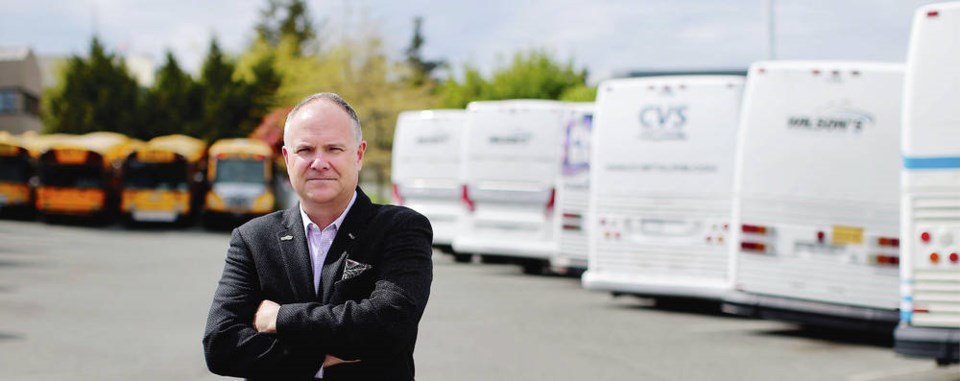A national coast-to-coast network of inter-city bus routes could be up and running before the end of this year, says one of the men signed on to make it a reality.
John Wilson, president of Victoria-based Wilson’s Transportation Group and one of the founding members of the Coast to Coast Bus Coalition, said some form of network could be established in the next three to six months if they can tap into federal money to seed the project.
Wilson said the coalition, made up of six Canadian transportation companies with operations in all regions of the country, has been discussing the possibility of establishing an “essential bus network” that would be regulated by a new National Highways Transportation Board.
The coalition has asked the federal government to enter into a memorandum of understanding to look into a long-term bus solution in the wake of Greyhound leaving the Canadian market.
It has also asked for a federal contribution of $150,000 to develop a feasibility study and business plan and to establish an annual budget for the National Highways Transportation Board.
“We’re looking for more of a permanent subsidy program for private inter-city operators,” said Wilson, noting funds have been offered to public-transit providers to maintain operations through the pandemic.
Most inter-city transport is provided by private operators like Greyhound, said Wilson. With that company now out of the Canadian market, connections between rural and urban communities will be lost, he said.
Wilson said annual federal funding is needed for a system that would link the entire country by bus. According to some federal pre-budget documents, that funding could be in the neighbourhood of $8 million a year.
In the aftermath of the pandemic, a national bus network could provide an affordable alternative to what are expected to be higher airline ticket prices and the possibility some air routes may not return at all, he said.
In a statement, Transport Canada said it is not currently contemplating any changes to its role in the inter-city bus sector, but said it would be open to working with the provincial and territorial partners that currently oversee the sector.
In a submission to Transport Canada, the coalition said a bus network would offer reliable and reasonably priced transportation for people, goods and freight. It has said it is open to increased participation from transportation companies and First Nations and will offer sufficient service levels to meet demand while ensuring it doesn’t lose money.
In a letter of support from Transport Action Canada, a consumer advocate group, president Terence Johnson said public transportation is essential for access to health care and education, connecting people with employment and linking employers with a broader labour pool.
“Where public transport is absent, it is not just opportunities that are lost,” he wrote, pointing to the National Inquiry into Missing and Murdered Indigenous Women and Girls to argue the federal government has an “undeniable moral imperative” to maintain an essential network of safe transportation that reaches all communities.
In the Green Party’s pre-budget submission to federal Finance Minister Chrystia Freeland, Saanich-Gulf Islands MP Elizabeth May called for an investment in affordable, low-carbon, ground transportation.
“Canada’s system of public transport falls somewhere below most developing countries. Bus service has disappeared from most provinces,” she wrote. “The lack of predictable, low-carbon and convenient transportation between cities is dangerous for the poor, while boosting [greenhouse gases] as people have no choice but to fly or drive.”
May called for a national transportation strategy with a goal of reaching zero-carbon public ground transportation everywhere in Canada by 2040.
“A national strategy must include service to rural and remote communities. Every Canadian must have access to reliable, low-carbon transportation options at affordable rates.,” she wrote.



